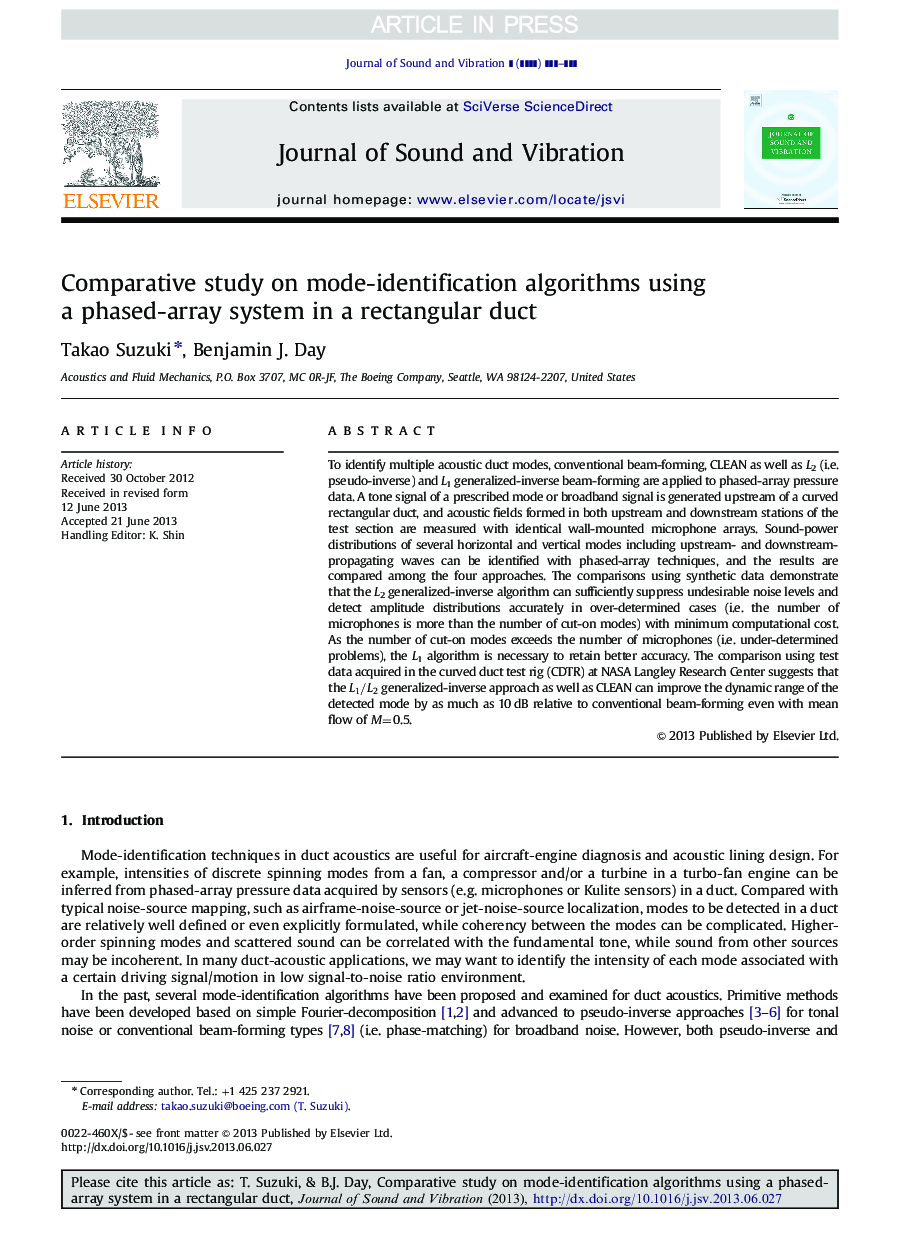| Article ID | Journal | Published Year | Pages | File Type |
|---|---|---|---|---|
| 6755897 | Journal of Sound and Vibration | 2015 | 19 Pages |
Abstract
To identify multiple acoustic duct modes, conventional beam-forming, CLEAN as well as L2 (i.e. pseudo-inverse) and L1 generalized-inverse beam-forming are applied to phased-array pressure data. A tone signal of a prescribed mode or broadband signal is generated upstream of a curved rectangular duct, and acoustic fields formed in both upstream and downstream stations of the test section are measured with identical wall-mounted microphone arrays. Sound-power distributions of several horizontal and vertical modes including upstream- and downstream-propagating waves can be identified with phased-array techniques, and the results are compared among the four approaches. The comparisons using synthetic data demonstrate that the L2 generalized-inverse algorithm can sufficiently suppress undesirable noise levels and detect amplitude distributions accurately in over-determined cases (i.e. the number of microphones is more than the number of cut-on modes) with minimum computational cost. As the number of cut-on modes exceeds the number of microphones (i.e. under-determined problems), the L1 algorithm is necessary to retain better accuracy. The comparison using test data acquired in the curved duct test rig (CDTR) at NASA Langley Research Center suggests that the L1/L2 generalized-inverse approach as well as CLEAN can improve the dynamic range of the detected mode by as much as 10Â dB relative to conventional beam-forming even with mean flow of M=0.5.
Related Topics
Physical Sciences and Engineering
Engineering
Civil and Structural Engineering
Authors
Takao Suzuki, Benjamin J. Day,
